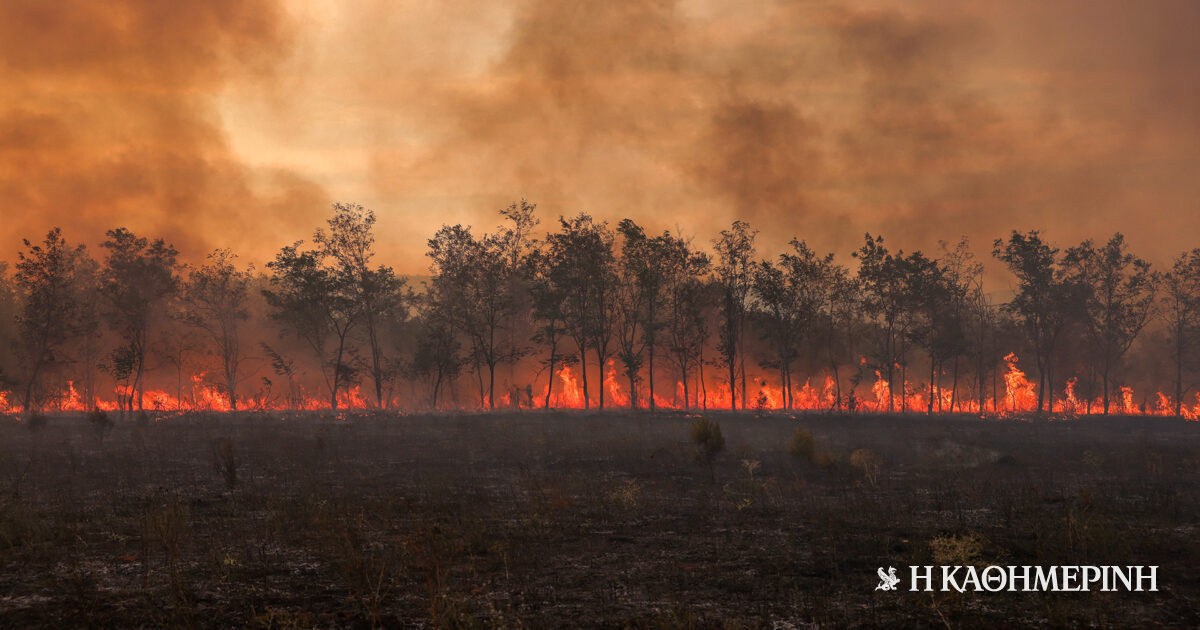
In the photo collections that bring together the most powerful moments of 2023, before the end of the year, images of natural disasters in Greece take center stage. Europe's largest fire, which burned for 17 days on the Evros River, and the unprecedented floods that immediately followed, reflected the consequences of the climate crisis in the most severe ways. The photographers who were present in the two fields filming the natural disaster and its impact on the lives of thousands of people spoke to “K” about what they experienced and recorded with their cameras.
Alexandros Avramidis
Alexandros Avramidis has been a photojournalist at the biggest events of the past two decades in Greece and the Balkans, while in 2016 he was honored with a Pulitzer Prize for his coverage of the refugee crisis. A Reuters contributor, he covered both disasters, spending several consecutive days in the field.

“What we faced in Alexandroupolis was unprecedented: the fact that thousands of lands were reduced to ash. It was as difficult as a picture to face the scale of the disaster. It affects you, but often in the stress you don’t think about what is happening. You will deal with it later when you remember what It happened”.
Covering fires and floods carried risks. Mr. Avramides remembers his return from Pelion in the midst of Daniel's bad weather. “I knew I had to go that same day. On the way back it started raining heavily again. The road was difficult, there were floods, and the road surface was gone. I was worried because it was getting dark. The next day I read the news and saw that parts of the network The roads have collapsed.”
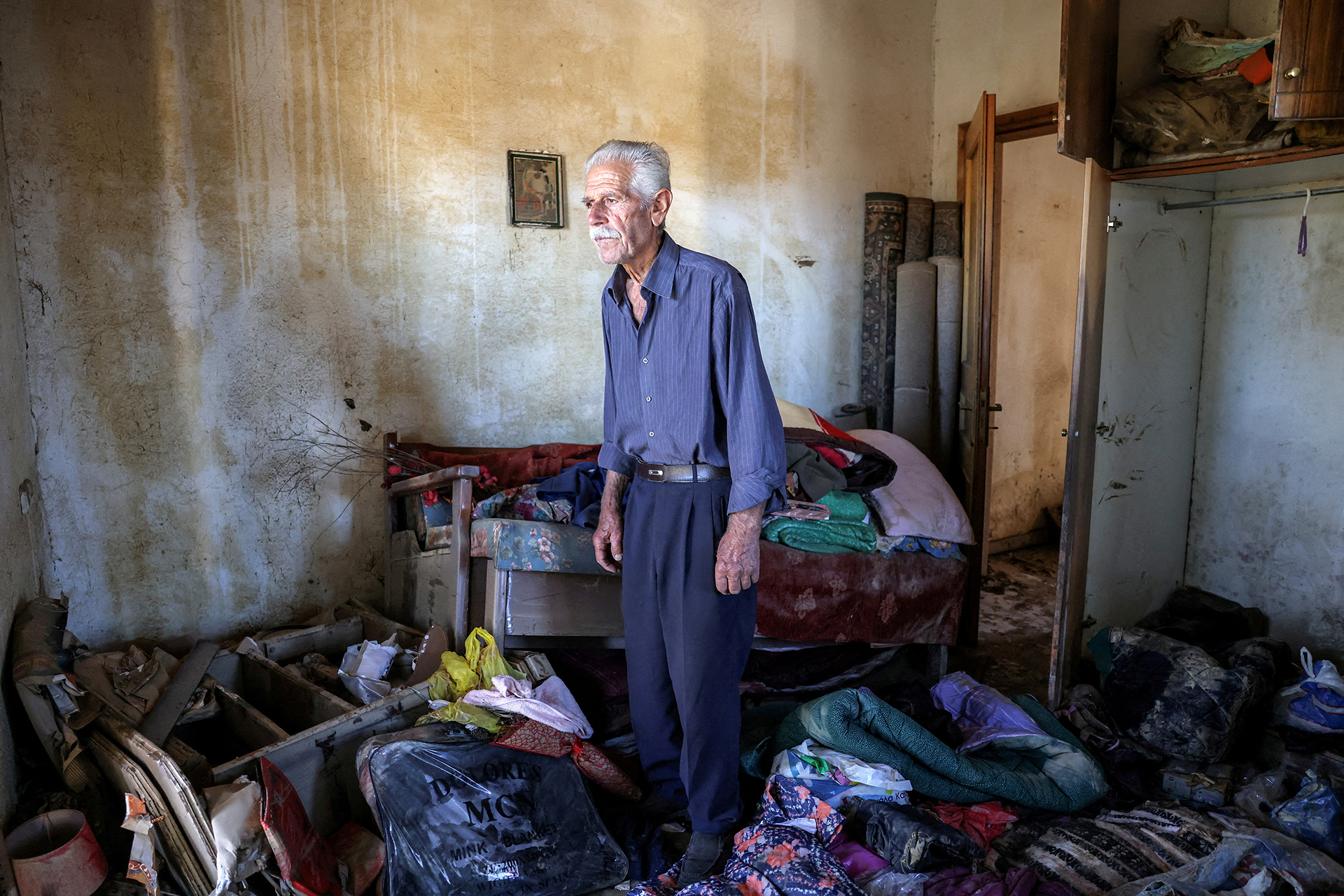
The moments that remained clearly present in his mind were two evacuations in which people tried to save themselves, in one case from fire and in the other from water. In Alexandroupolis, he found himself in the evacuation of the Stavried Institution for the Chronic Suffering, which occurred in the middle of the night after flames came dangerously close to the building. “These were heroic moments for the people who worked there. The fire reached 10 metres. On the one hand, the firefighters are making superhuman efforts so that the fire does not reach the institution, and on the other hand, the employees and priests, with their means, ambulances and special vehicles, to transport the injured.” “He is a quadriplegic. The efforts made to save the center and the people were effective.”
During the floods, he took photographs of the evacuation efforts in Megala Kalivia, as people moved from house to house, with whatever was inside, freeing residents with boats and tractors.
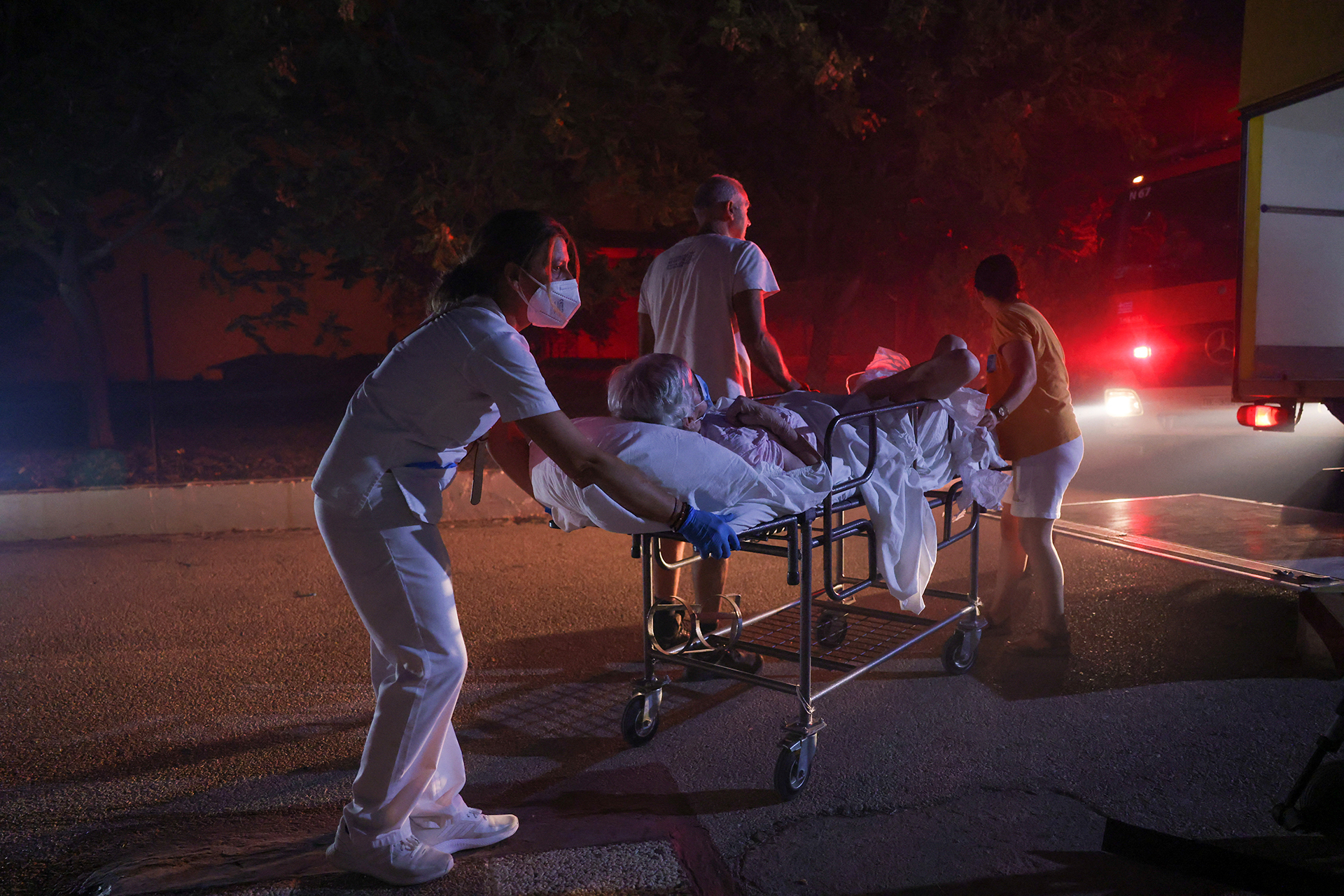
Some photos of Alexandros Avramidis were found on the pages and websites of the largest media outlets in the world. “When this is the case and you want to inform the world, you try to give your best. Powerful photography is not only about the artistic part, it is also about feeling what is happening around you and conveying the image.”
Widow of Achilles
“What I have covered so far has nothing to do with what I faced this summer,” noted Achilleas Kheras, a photojournalist with the Athens Macedonian News Agency. Mr. Kheras belongs to the new generation of photojournalists and was at the forefront in both Alexandroupolis and Thessaly.
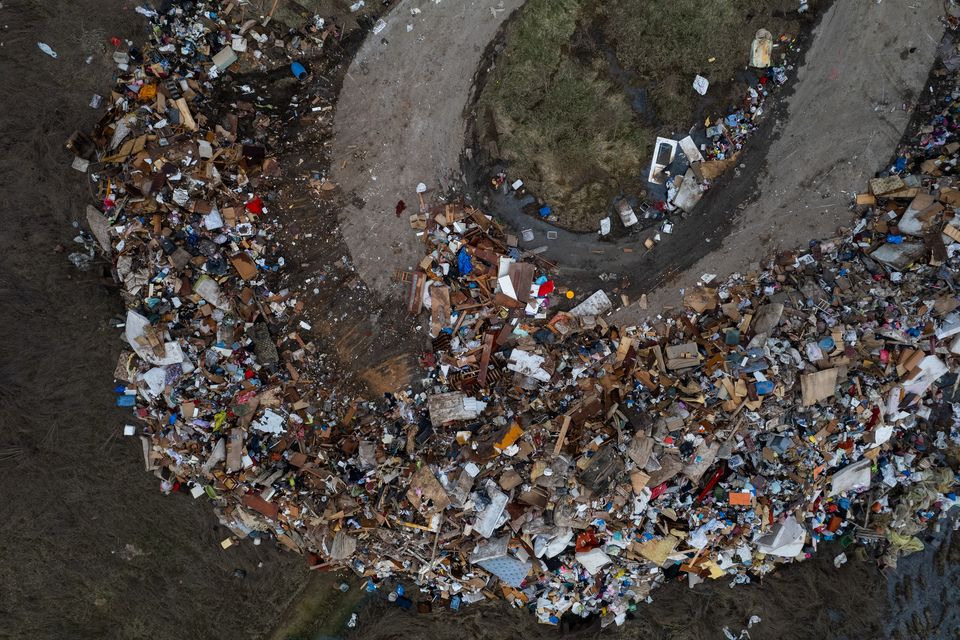
As he said in his interview with “K”, he does not believe that anyone could have predicted how to move safely in the fields of such major disasters, as the speed with which the phenomena developed and the extent of their spread were unprecedented. “On the first day the fire moved from one mountain to another within five minutes. Your attention has to be 100% there.”
In Thessaly, the situation was more difficult. “There are faces that look innocent,” he said characteristically, “and within an hour they cease to exist.” He and his colleagues were excluded due to flooding in a village neighboring Pinhos, where he remained for three days. As he said, he got close to the people affected by this phenomenon and through photographs he was able to tell their stories. “I remember Mr. Thanassis and his dog. It was one of the first pictures I took as soon as we arrived in that village. His story was poignant, because the container seen from behind was his house. He was in shock. Apart from a bag of clothes, all he had was his dog.” .
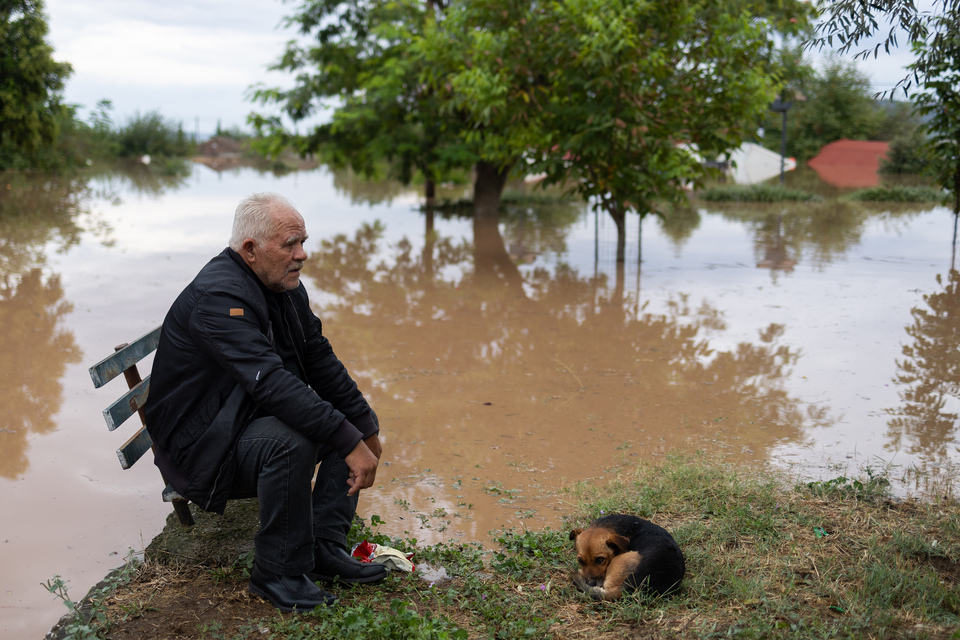
He also recorded pictures of the total devastation on his trip, a few days later, in the rest of the affected villages of Campos. In Keramidi, where homes were covered by water for days, he saw a roof blown away in the middle of the village square, while residents showed him what their homes looked like before the waters destroyed them. “It was really like a scene from a movie.”
He felt similar emotions when he realized the extent of the devastation caused by the fires in the Evros region, so he raised his drone for the first time. “Below is a front that can't stop burning. We were shocked to realize how much area had been burned, when we saw the drone footage. You get a feeling that I can't put into words.”
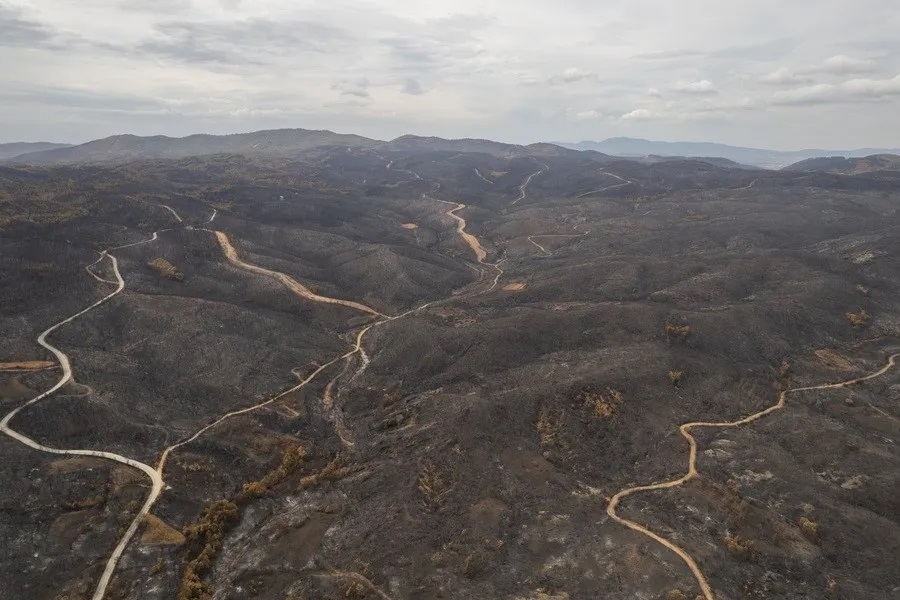
George Mutafis
One of the first images to “come out” of the Palamas area, which was damaged beyond repair, was of Giorgos Motavi, a partner of Reuters and major international media outlets. He basically swam, camera in hand, into the village. “In Palamas, dozens of people were paddling to leave their homes. Having covered migration for years, I never expected to see people on the Thessaly Kampos in inflatable rafts trying to escape to avoid drowning. It was unbelievable!”
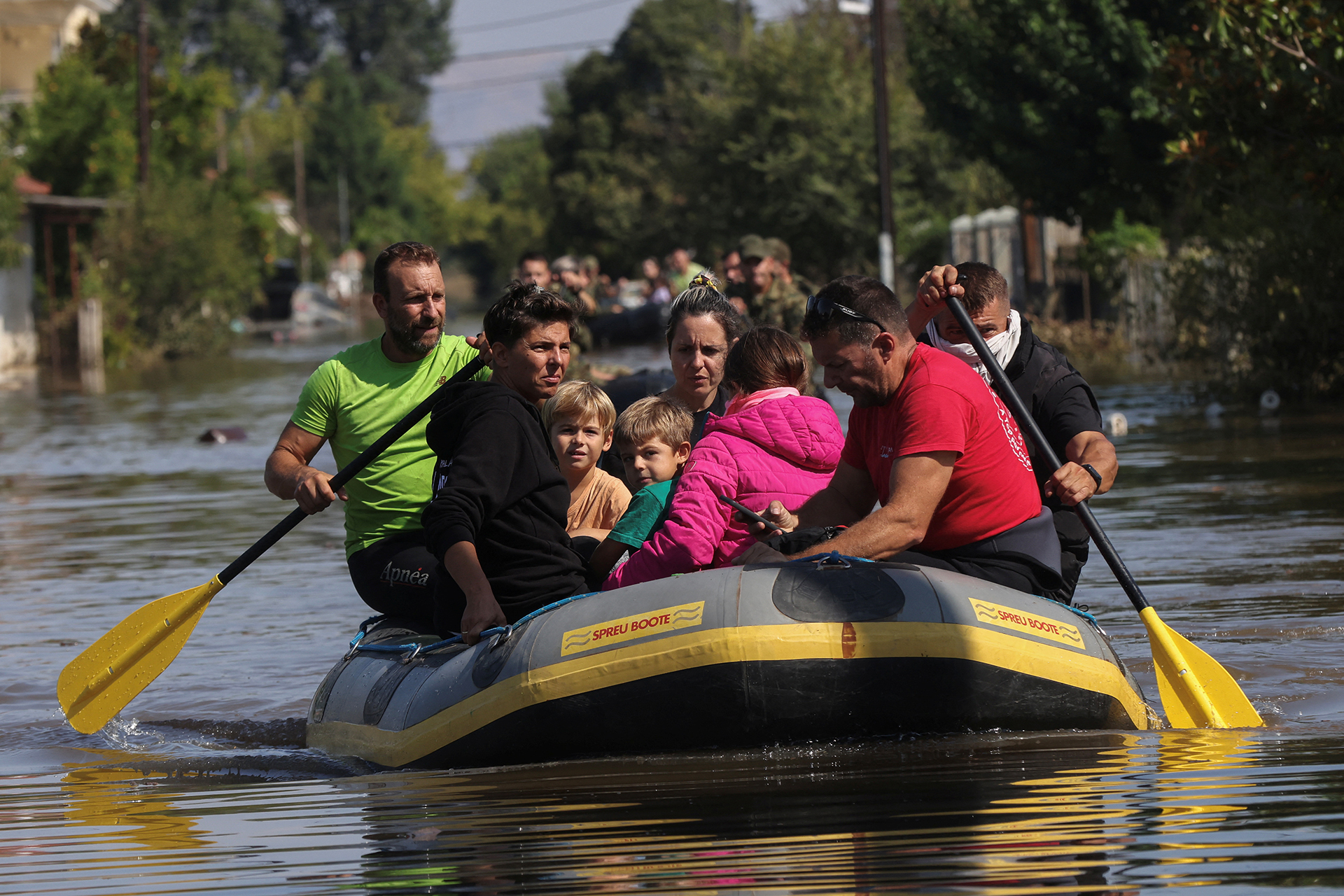
Regarding challenges in such areas, he said, disaster also entails danger. But photojournalists, he explained, choose to enter into the process to capture what is happening. “Unfortunately, others did not choose to be in this situation. Herders, land workers and residents were forced to suffer.”
Just 24 hours before he went to Thessaly, he was working with the BBC in Alexandroupolis. When the journalist asked me what title I would put in the report, I replied: “The lungs of the Balkans burned.”
While driving on the mountain roads from Dadia to Alexandroupoli, he cannot forget the noise. “It was absolute silence. Nothing was left standing. Only one deer passed by at one point. It was as if the forest was crying over what had happened.”
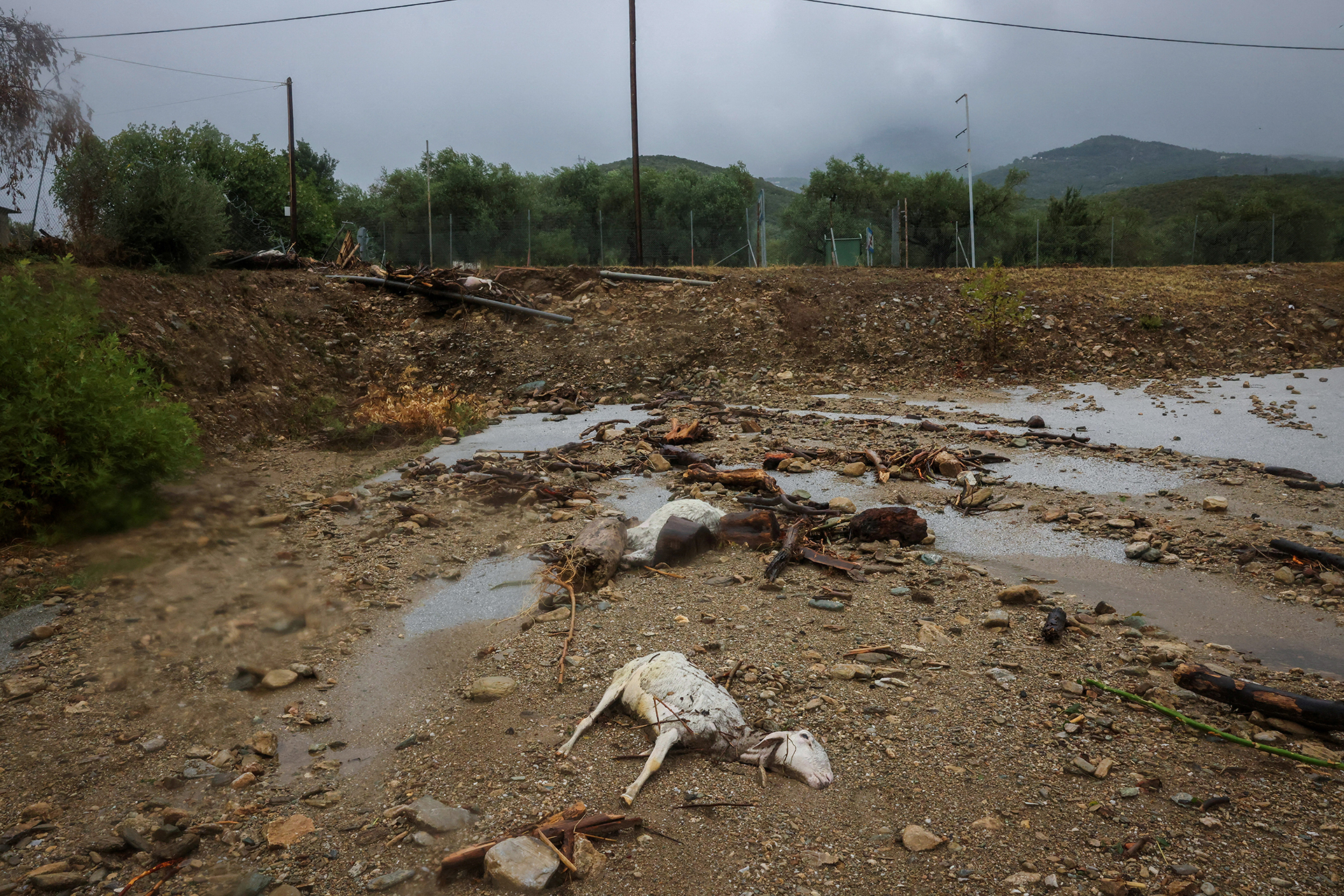
Having covered crises internationally, such as the war in Ukraine and Israel, he admitted that covering such phenomena in Greece is more emotionally difficult. “You can hear the pessimist, a man hiding behind his house who has given up on his luck. This touches you.” He himself tries not to get emotionally involved in that moment. “But I do not hide from you that sometimes we get torn behind the lens and hide behind the camera.”
We asked him how a photojournalist can create a good image from a challenging field. “Our job is not to take a good picture, but to capture what is happening in front of us as objectively as possible for people who do not know what is going on. The goal is to report the news.”

“Hipster-friendly coffee fanatic. Subtly charming bacon advocate. Friend of animals everywhere.”





More Stories
F-16 crashes in Ukraine – pilot dies due to his own error
Namibia plans to kill more than 700 wild animals to feed starving population
Endurance test for EU-Turkey relations and Ankara with Greece and Cyprus